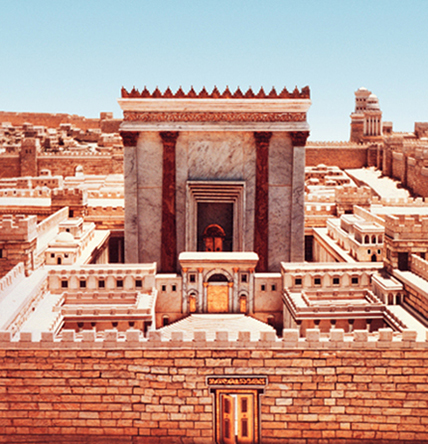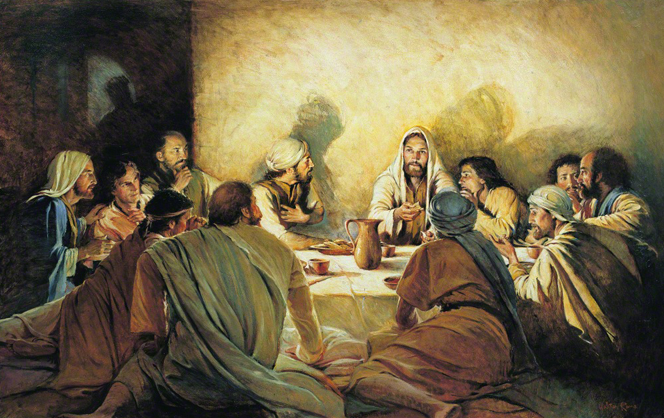 A talk delivered in Sacrament Meeting
A talk delivered in Sacrament Meeting
Good morning Brothers and Sisters. Today It is my privilege to combine my interests in Ancient Israelite worship with this year’s theme of keeping the Sabbath day holy. While we do not practice our religion in the same way as they did, there are a number of similarities that have deepened my understanding of the Sabbath day, sacred ordinances, and my attitudes toward worship in general. My hope is that we can all be uplifted and edified together as I share some of the lessons I’ve learned about Sabbath day observance with you.
SIN
If you think of the Law of Moses as a complex and ancient system of worship, you’re not alone. There are a lot of rituals and procedures that are easy to get confused about, but its overall purpose is really pretty simple. It outlined certain things that made one unclean, and a process by which they could become clean again. At its core, the Law of Moses was to point the Israelites to the future Messiah who would deliver them from sin.
Exodus 34: 7outlines three types of sin, which are just as common in our day, as they were to our Israelite ancestors: “Keeping mercy for thousands, forgiving iniquity and transgression and sin, and that will by no means clear the guilty;” As I dig a little deeper into these three types of sin, I hope you’ll consider the impact they may have in your lives – I know I am guilty of them on a regular basis.
The Hebrew word for INIQUITY: (עָוָה – Avah) means to crook, or twist, and can be translated as “Pervert”. Iniquity occurs when truth or righteousness is twisted. I have observed this in the world as the pure doctrines of the scriptures as well as the Family Proclamation have been twisted and turned to suit the carnal ways of men. I also observe it in my own life on occasion as I try to justify my offenses to others.
The next type of sin (חטא Chatah) means to “Miss the Mark”. It could be used with regard to hunting or target practice as well as in spiritual things. Ancient Israelites were often tempted to worship foreign Gods and dumb idols, while claiming their loyalty to the true God of Israel. They forgot the first Commandment, which states that “Thou shalt have no other Gods before me”. In disregarding this bullseye commandment, Israel missed the mark, and sinned.
Are there spiritual targets that we miss in our lives? Maybe we have good intentions of reading scriptures or serving others, but fail to follow through? Or perhaps we miss the bullsye’s of home and visiting teaching or temple worship on the targets of our spiritual progression.
The third type of sin is transgression. The original word means to cross over a boundary. It could be used in the case of crossing a physical location like a river, property line, or political border, as well as the crossing of the spiritual boundaries established by the Lord. Sometimes this word gets translated as “Trespass”. This was the type of sin committed by Adam and Eve, who crossed the known boundary of partaking of the fruit of the tree of knowledge of good and evil.
The Old Testament gives an account of the sin of a Sabbath breaker, who simply wanted to gather firewood. Knowing the Law, and yet breaking it might have been considered a transgression, or perhaps it was iniquity because he twisted the truth justifying to himself that if he didn’t gather the wood, his family would be cold, or eat their food uncooked. Regardless of the type of sin, it was a violation of the law. Moses was told that the man should be stoned to death by the children of Israel. Reading this account made me consider what transgressions I commit on the Sabbath that might have led to my stoning in ancient times. Execution may seem like a harsh consequence today, but the physical death of old times is really a symbol of our spiritual death when we break the Sabbath today.
There is a fourth type of ancient uncleanliness that has significant relevance today. If you were touched by a Leper, or accidentally touched the corpse of an animal or a human, under the Law of Moses you would be considered unclean. In our culture it would be unfair for someone to suffer consequences for actions that were not intentional, and yet it required the same rigorous repentance process as a sin that was committed intentionally.
I am affected by this type of sin as pornography in all its forms flashes across the internet or grocery store checkout stands. Or in one of my places of work, I sometimes overhear the exchange of the carnal, sensual, and devilish things some men do on their weekends or time off. Spiritual corpses lie all around us. Despite my unwilling participation in these events, I still become defiled and stand in need of the cleansing and enabling powers of the atonement.
 OVERCOMING SIN
OVERCOMING SINAncient Israelites understood the feeling following true repentance in the same way as the satisfying feeling that followed eating a delicious meal. Full purification from sin would have required the following three-part sacrificial process, which once completed brought satisfaction to the demands of justice and mercy.
The first sacrifice represented justice. Half of the animal would be symbolically eaten by God through the process of burning, and the other half would literally be eaten by the priest. Once each portion was completed, satisfaction of justice was met.
The second animal sacrifice represents consecration. It was entirely consumed in flame, and neither the priest nor the offender would eat it as it belonged completely to God. It represents the offender’s total and complete consecration of themselves to God. Our scriptures often refer to this as “the burnt offering”. This sacrifice was offered in the tent of feast morning and night, every single day of the year, suggesting that Israelites were the Lord’s covenant, and consecrated people. To reinforce the idea of consecration, this same burnt offering was additionally made twice in the morning and twice at night on the Sabbath. This doubly reinforced the importance of the Sabbath Day, and the need to completely consecrate themselves to the Lord on his Holy day.
The third sacrifice was split three ways: the first portion was symbolically eaten by God through the smoke of the burnt offering, the second by the priest, and the third by the offender. This offering satisfied God, the priest, and the offender, who were once again unified in righteousness. Because of the goodwill following this offering, it was sometimes offered alone to simply give thanks to the Lord for his blessings.
This pattern of cleansing is followed in a very familiar Book of Mormon account. On at least three different occasions, Lehi performed sacrificial ordinances. The first came when they arrived in the borders by the Red Sea. On that occasion, they skipped the first offering because no sin or offense had occurred, so they offered one sacrifice completely to God, followed by the last or “Thanks offering”. (see
1 Nephi 2: 5-7)
The second ordinance came when the sons returned from retrieving the Brass Plates, but also on that occasion the blood of Laban was shed. Under the Law of Moses, Nephi would have been considered very unclean having killed a man and been exposed to his blood. On this occasion, all three sacrifices were made. (see
1 Nephi 5: 8-9)
The third time came when the sons returned with Ishmael and his family. If you’ll recall, Laman and Lemuel and the sons of Ishmael beat Nephi (likely to the point of bleeding) and sought to murder him. After arriving back to Lehi’s tent in the wilderness, and probably following some strong words from their presiding patriarch, Nephi’s brothers felt sorry, repented, and each of the sacrifices were performed (
1 Nephi 7: 22). Though they had left Jerusalem and their temple, the need for the cleansing brought about through priesthood ordinances remained an important part of their journey to the Promised Land.
Each of the symbols in ancient ordinances are found in this room today. Theirs were performed in the soft walled Tabernacle of Feast. Ours are performed in this hard walled building. Their feast was literal; ours is literal through the sacred sacrament emblems we took moments ago, but also spiritual as we feast upon the spirit that abides in this meeting following true repentance. In both days, sacrificial emblems sit upon the holy altar, where Priests of the Aaronic Priesthood intercede on behalf of the offenders. And sitting behind me, we have the presiding officer in the Aaronic Priesthood, who as a symbol of our Father in Heaven, oversees the ordinances performed. While some of the technical details differ, the essence of ancient and modern ordinances is the same, with Jesus Christ’s cleansing power at their core.
Frequent repetition of this ordinance serves as a reminder of what the Savior has done for all of God’s children. Unfortunately, repetition can also lead to complacency. This was true in ancient times, and prophets let them know:
Isaiah 48:1-2 – Hear ye this, O house of Jacob, which are called by the name of Israel, and are come forth out of the waters of Judah, which swear by the name of the Lord, and make mention of the God of Israel, but not in truth, nor in righteousness. For they call themselves of the holy city, and stay themselves upon the God of Israel; The Lord of hosts is his name.
Isaiah 1:11-12– To what purpose is the multitude of your sacrifices unto me? saith the Lord: I am full of the burnt offerings of rams, and the fat of fed beasts; and I delight not in the blood of bullocks, or of lambs, or of he goats.
When ye come to appear before me, who hath required this at your hand, to tread my courts?
These verses both say in essence, that while the Israelites were doing the right things outwardly, their inner convictions were missing, and instead of worshiping the Lord, they essentially mocked Him.
At times I have been guilty of apathy and going through the motions. But I have learned that if I walk away from this sacrament meeting or my temple worship feeling unsatisfied or not uplifted, it isn’t because of some failing on the part of the church leaders, the sacrament program or speakers, but it is because I came to the altars empty handed, having left the sacrificial animal of my broken heart and contrite spirit at home.
I testify that the sacrament ordinance is a sacred reminder of the merits of he who is mighty to save. I further witness that heartfelt Sabbath Day observance is perhaps one of the best forms of the worship of our Father in Heaven. In the name of Jesus Christ. Amen.
 A talk delivered in Sacrament Meeting
A talk delivered in Sacrament Meeting
